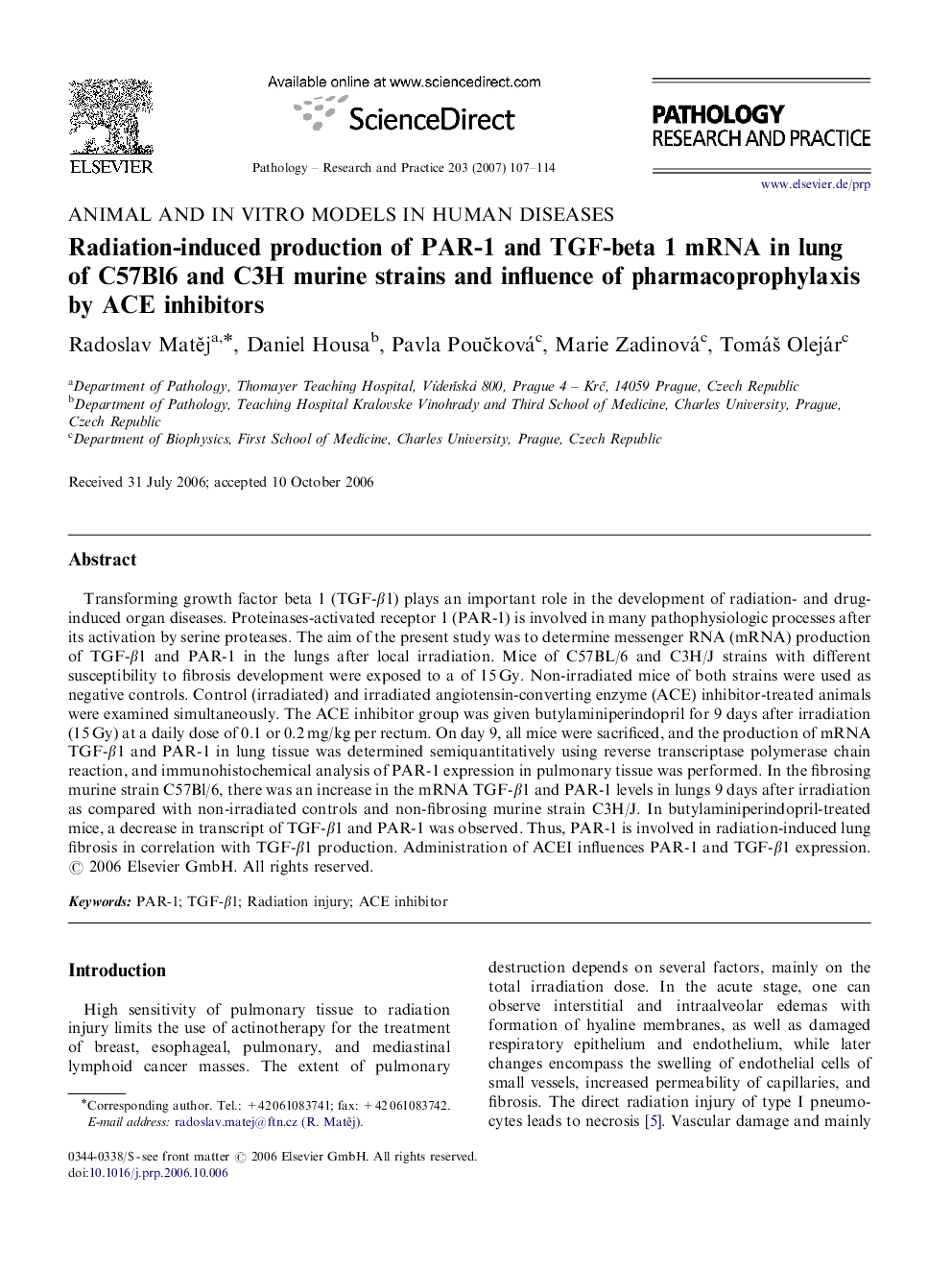| Article ID | Journal | Published Year | Pages | File Type |
|---|---|---|---|---|
| 2156911 | Pathology - Research and Practice | 2007 | 8 Pages |
Transforming growth factor beta 1 (TGF-β1) plays an important role in the development of radiation- and drug-induced organ diseases. Proteinases-activated receptor 1 (PAR-1) is involved in many pathophysiologic processes after its activation by serine proteases. The aim of the present study was to determine messenger RNA (mRNA) production of TGF-β1 and PAR-1 in the lungs after local irradiation. Mice of C57BL/6 and C3H/J strains with different susceptibility to fibrosis development were exposed to a of 15 Gy. Non-irradiated mice of both strains were used as negative controls. Control (irradiated) and irradiated angiotensin-converting enzyme (ACE) inhibitor-treated animals were examined simultaneously. The ACE inhibitor group was given butylaminiperindopril for 9 days after irradiation (15 Gy) at a daily dose of 0.1 or 0.2 mg/kg per rectum. On day 9, all mice were sacrificed, and the production of mRNA TGF-β1 and PAR-1 in lung tissue was determined semiquantitatively using reverse transcriptase polymerase chain reaction, and immunohistochemical analysis of PAR-1 expression in pulmonary tissue was performed. In the fibrosing murine strain C57Bl/6, there was an increase in the mRNA TGF-β1 and PAR-1 levels in lungs 9 days after irradiation as compared with non-irradiated controls and non-fibrosing murine strain C3H/J. In butylaminiperindopril-treated mice, a decrease in transcript of TGF-β1 and PAR-1 was observed. Thus, PAR-1 is involved in radiation-induced lung fibrosis in correlation with TGF-β1 production. Administration of ACEI influences PAR-1 and TGF-β1 expression.
